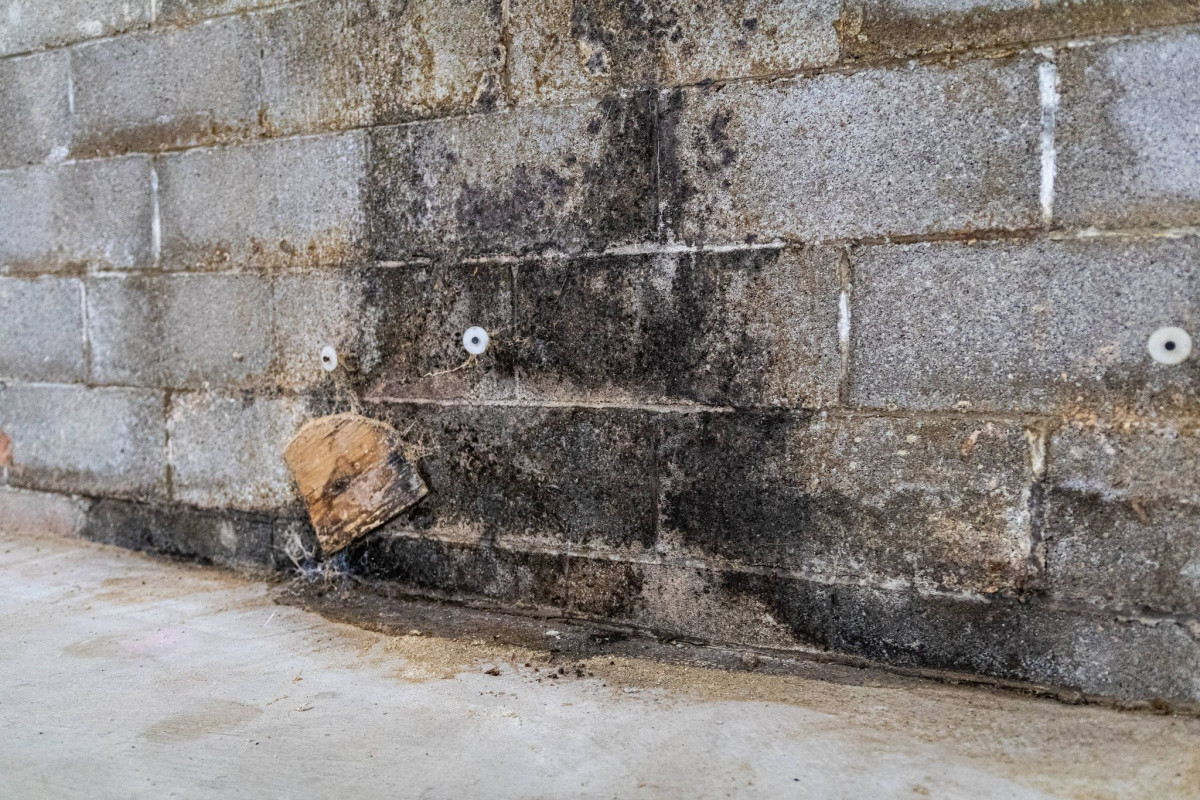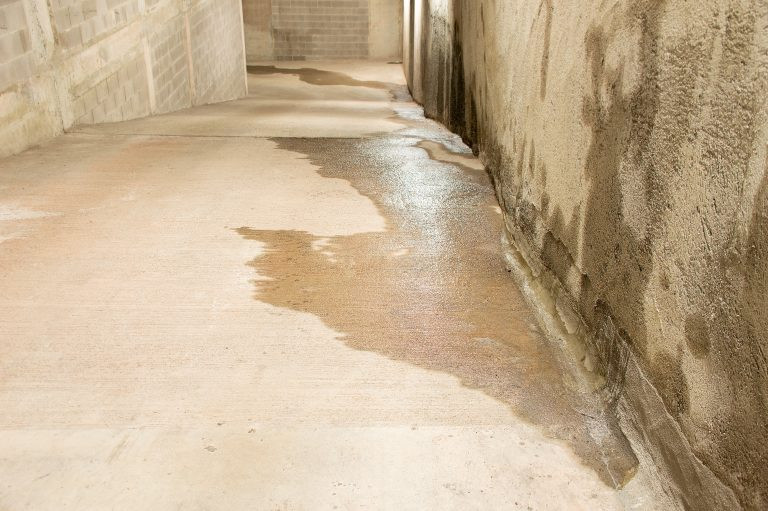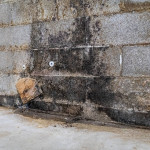You’ve probably noticed that damp smell in your basement, but are you aware of the serious risks it poses? We’re not just talking about structural damage, but also potential health issues like respiratory problems caused by mold growth. Luckily, there are systems like sump pumps, dehumidifiers, and vapor barriers designed to keep these dangers at bay. But how effective are they, really? And are they worth the investment for your home’s value and your family’s health? Let’s explore this further.
Understanding Basement Moisture Dangers
 Basement moisture isn’t just a minor inconvenience; it poses significant dangers that every homeowner should understand. Persistent dampness can compromise the structural integrity of your home.
Basement moisture isn’t just a minor inconvenience; it poses significant dangers that every homeowner should understand. Persistent dampness can compromise the structural integrity of your home.
It’s a catalyst for wood rot, which can weaken wooden supports and joists. In turn, this can lead to sagging floors, cracked walls, and a shifting foundation.
Moreover, water seeping into your basement can cause significant property damage. It can ruin carpets, furniture, electronics, and stored items.
It also makes your basement a less usable space, reducing both your living area and the value of your home.
Basement moisture can also increase your energy bills. When your basement is damp, it’s harder to heat and cool your home effectively.
Moist air requires more energy to heat or cool than dry air, so you’ll find that your HVAC system has to work harder, resulting in higher energy costs.
Finally, it’s important to emphasize that moisture in your basement can attract pests. Insects and rodents are drawn to damp environments.
They can cause additional damage and even pose health risks.
The Health Risks of Damp Basements
You mustn’t underestimate the health risks associated with damp basements.
The presence of moisture can foster the growth of mold, which may lead to numerous health issues, including respiratory problems and allergic reactions.
In addition, persistent dampness can compromise the structural integrity of your home, posing a substantial safety risk.
Mold-Related Health Issues
When left unchecked, moisture in your basement can lead to the growth of mold, a silent but potent health risk. This fungal menace thrives in damp, low-light conditions, and its spores can proliferate fast, turning your basement into a breeding ground.
Exposure to mold can trigger a range of health issues. You might experience allergic reactions, including sneezing, skin rashes, and watery eyes. Asthma sufferers may notice worsening symptoms, as mold spores can irritate the airways and lungs.
But it’s not just those with existing conditions who need to worry. In extreme cases, prolonged exposure to certain types of mold, like Stachybotrys chartarum or black mold, can lead to serious health problems such as respiratory infections, chronic fatigue, and even neurological issues.
Mold doesn’t just pose a risk to your health, it’s also a stealthy invader. It can grow behind walls and beneath floors, silently spreading its spores through your home’s air.
Don’t underestimate it. Be proactive in controlling moisture and preventing mold growth. Your health could depend on it.
Stay tuned for our next discussion on “Structural Damage Risks”.
Structural Damage Risks
Unchecked dampness in your basement isn’t just a threat to your health.
It’s also a risk to the structural integrity of your home. Prolonged exposure to moisture can cause significant damage to your home’s foundation, walls, and other structural components.
Firstly, you should be aware of the risk of concrete degradation. Concrete absorbs moisture, which can lead to the breakdown of its chemical composition over time. The result? Crumbling, weakened concrete that’s more susceptible to cracks and fractures.
Wooden structures, too, aren’t immune to the damage caused by dampness. Excessive moisture can lead to the growth of wood-destroying organisms like rot and fungi. These organisms can eat away at the wood, causing it to weaken and decay.
And it’s not just the visible parts of your home that are at risk. Dampness can seep into hidden areas, like behind walls, causing undetected damage.
Lastly, let’s not forget about steel. While it’s often considered impervious to moisture, prolonged exposure to damp conditions can lead to corrosion. This weakens the steel, compromising its ability to support your home’s structure.
In essence, unchecked basement moisture doesn’t just pose health risks—it’s a silent destroyer of your home’s structural integrity.
Structural Concerns From Moisture Damage
Although it may not be immediately apparent, persistent basement moisture can cause significant structural damage over time. You’re not just battling a dank, unpleasant smell; you’re combating a destructive force that can compromise your house’s integrity.
Wooden elements in your foundation, like joists and sills, often succumb first. Moisture encourages the growth of wood-rotting fungi, which weakens the wood’s structure, compromising its ability to bear weight. This mightn’t seem like a big deal at first glance, but it’s fundamentally the equivalent of removing the support beams from a building – pretty risky, wouldn’t you say?
Moreover, moisture intrusion can lead to concrete degradation. Long-term exposure to water can cause the concrete to expand and contract, leading to cracks and fissures. These cracks become channels for more water penetration, thereby worsening the damage.
Finally, the increased humidity can corrode metal reinforcements, further undermining the structural stability of your basement. The corrosion process weakens the steel, reducing its capacity to withstand loads and stresses.
Ignoring these issues won’t make them disappear. On the contrary, they’ll get worse. It’s vital to identify and rectify moisture problems before they escalate into a full-blown structural nightmare.
Common Moisture Sources in Basements
Now that we’ve explored the serious structural implications of basement moisture, let’s turn our attention to identifying common sources of this damaging element.
It’s important to highlight that these sources can be both external and internal.
Externally, rainwater and melting snow are significant culprits. They can saturate the soil around your house, leading to water seeping into your basement. Poor drainage systems, inadequate guttering, and a sloping landscape that directs water towards your home can exacerbate this issue.
Internally, appliances like washing machines, dishwashers, and even your HVAC system can contribute to moisture. If they’re not correctly vented or leak, they can cause an increase in basement humidity levels.
Additionally, condensation on cold surfaces can also add to the moisture content.
Systems to Prevent Basement Dampness
In light of the common sources of basement moisture, it’s essential to put systems in place to prevent dampness.
You’ll find various effective methods to keep your basement dry, each with its unique set of operational principles.
A primary line of defense is the installation of a vapor barrier. These barriers are typically plastic or foil sheets that block moisture from seeping into your basement walls and floor.
They can be installed during construction or retrofitted to older structures, offering a cost-effective solution to moisture ingress.
Next, consider the use of a sump pump system. This device collects water that has entered your basement and pumps it away from your home.
It’s a vital component in areas prone to heavy rainfall or with high water tables.
Lastly, dehumidifiers can be a valuable addition. These machines reduce the level of humidity in your basement, making it less hospitable to mold and mildew.
They’re particularly effective in dealing with condensation, a common cause of basement dampness.
Selection Criteria for Moisture Control Systems
When you’re choosing a moisture control system for your basement, it’s essential to understand your moisture control needs first.
You’ll need to compare different systems, evaluating their strengths and weaknesses in relation to your specific demands.
Don’t forget to take into account the installation process and ongoing maintenance requirements, as these factors will greatly impact the system’s effectiveness and your overall satisfaction.
Understanding Moisture Control Needs
A staggering number of homeowners underestimate the importance of understanding their specific moisture control needs. You can’t just choose any moisture control system; it must be tailored to your home’s specific needs and vulnerabilities.
Firstly, you need to identify the source of the moisture. This could come from external sources, like rain or groundwater seeping in, or internal sources, such as a leaking pipe.
It’s also essential to understand the construction of your home, as different materials respond differently to moisture. For instance, a stone foundation will require a different moisture control system than a poured concrete one.
In addition, consider your home’s geographical location and climate. If you’re in a humid area, you’ll need a more robust system than someone living in a drier climate.
Moreover, the system should be able to handle seasonal variations in moisture levels.
Lastly, think about your basement’s use. Are you using it for storage, or is it a living space?
Different uses require different levels of moisture control. Understanding these factors will help you select the most suitable moisture control system for your basement, ensuring its longevity and structural integrity.
Comparing Different Systems
Before diving into the specifics, it’s essential for you to understand that not all moisture control systems are created equal. Each system has unique attributes and capabilities, and it’s vital to take into account these differences when selecting the best solution for your basement moisture problem.
When comparing systems, pay attention to their operational principles. Some work by creating a physical barrier against moisture, while others regulate humidity levels, and yet others divert water away from your basement. You’ll need to understand your basement’s specific needs to choose the most effective system.
Efficiency is another significant factor. A system may be effective in controlling moisture but consume too much energy, leading to high utility bills. As a result, it’s best to look for systems that balance moisture control and energy efficiency.
Don’t overlook the system’s durability. Basements are often subjected to harsh conditions, and you’ll want a system that can withstand these without frequent breakdowns or replacements.
Lastly, factor in the cost. While it’s tempting to go for the cheapest option, remember that you often get what you pay for. High-quality systems may require a larger initial investment, but their long-term performance can make them more cost-effective.
System Installation and Maintenance
Moving onto the installation and maintenance of moisture control systems, it’s crucial to understand that these aspects can greatly influence your selection. A system that’s easy to install and maintain can save you time, money, and headaches down the road.
Firstly, consider the installation process. It should be straightforward, requiring minimal disruption to your home. Some systems might need extensive work, like digging up your basement floor, which could be costly and inconvenient.
Others, like dehumidifiers or vapor barriers, are less intrusive but still effective.
Next, consider the maintenance requirements. Some systems, like sump pumps, require regular checks and may need occasional repairs. If you’re not handy, you might’ve to hire a professional, which can add up.
On the other hand, systems like sealants or vapor barriers require less upkeep.
Lastly, consider the system’s lifespan. A long-lasting system might cost more upfront, but it’ll likely save you money in the long run.
When it comes to your basement, don’t underestimate the dangers of moisture. It’s not just about property damage; your health’s on the line too. Utilize systems like sump pumps, dehumidifiers, and vapor barriers to stay safe. Regular maintenance is key for effectiveness. Remember, the right system isn’t merely an expense, it’s an investment in your home’s integrity and your family’s wellbeing. Be informed, be proactive, and keep that basement dry. It’s worth it.




